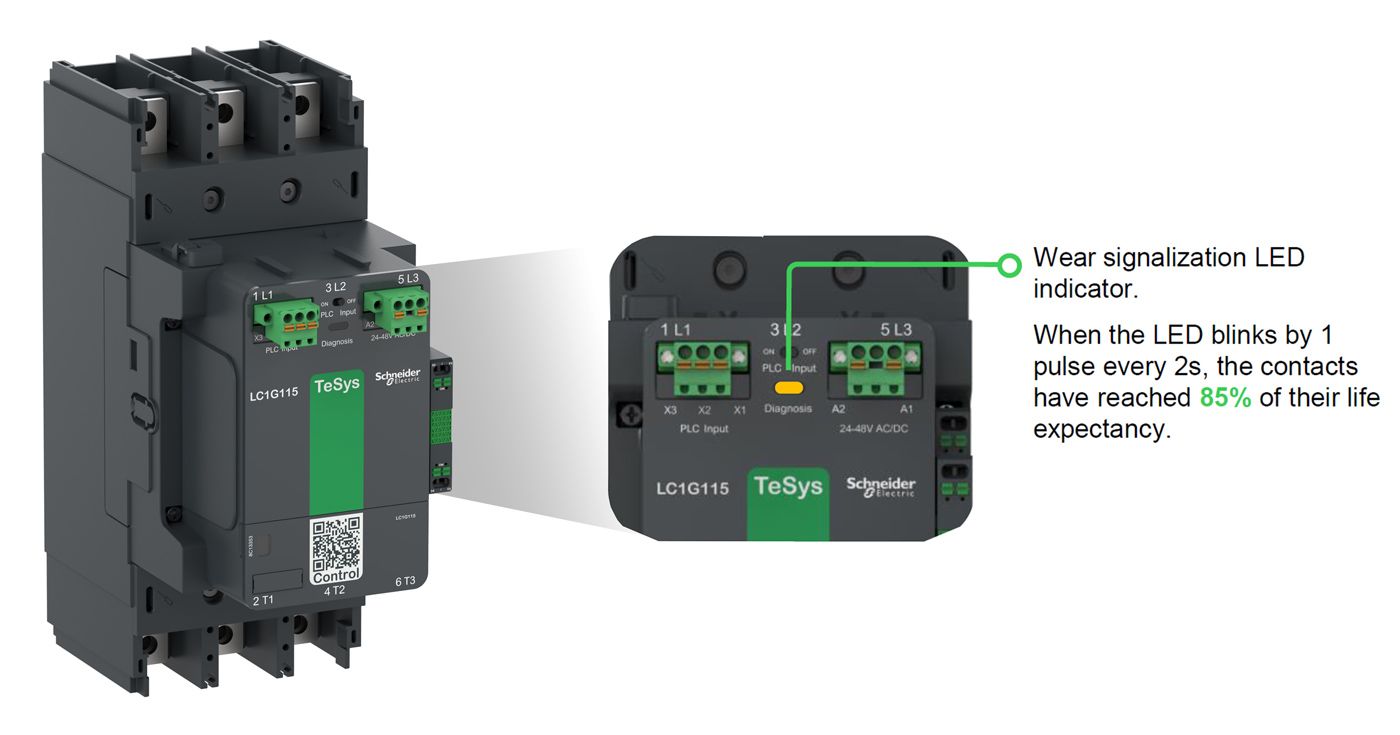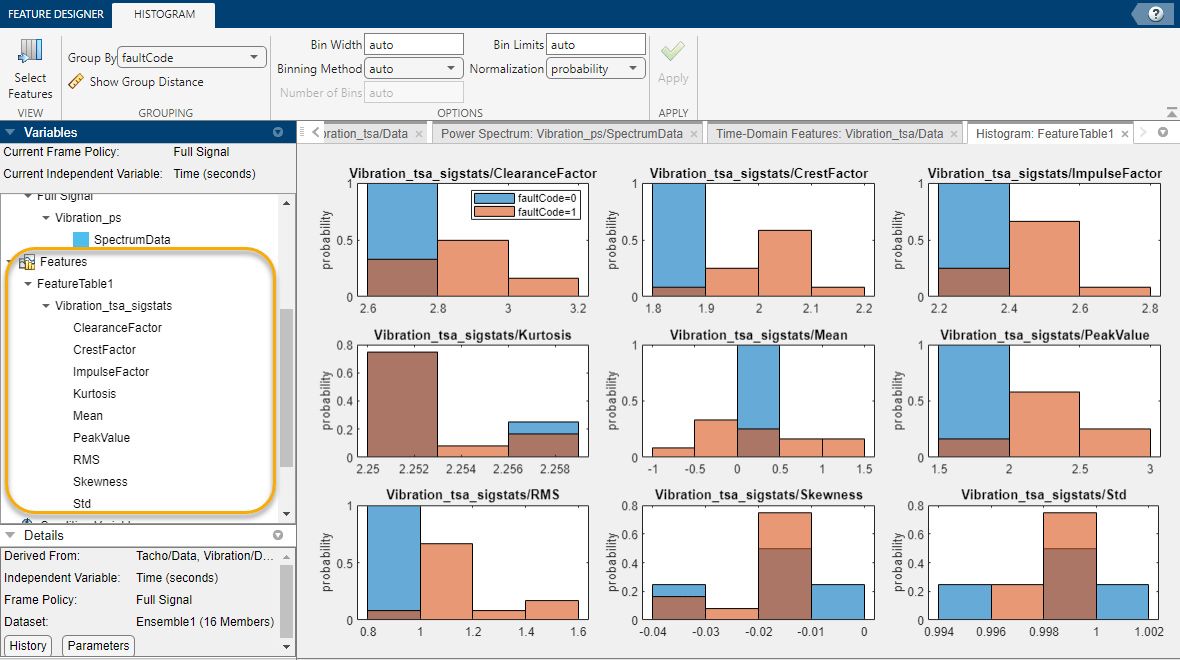Designing Smarter Electrical Equipment Embedded with AI
Combining Model-Based Design with AI in Electrical Systems Improves Industry Operations
All components of modern life depend on functioning electrical systems. On industrial scales, failure of those systems means data loss, waste, and darkness. One component in particular weathers significant wear and tear: a contactor, a device that switches current on or off. But until recently, maintaining contactors meant trying to anticipate when the devices could fail or malfunction. To fix this problem, engineers at Schneider Electric combined artificial intelligence (AI) and Model-Based Design to embed a predictive maintenance algorithm in the contactors themselves. As a result, they condensed a months-long maintenance test into a lunch break.
Putting a number to the remaining life span of contactors used to require an intensive, months-long period of testing. But with the increased accessibility of AI tools for engineering, not only did Schneider Electric’s engineers shrink this testing time, but they cut new contactor development time from three years to six months.
“Before this new method, customers needed to switch off the installation during a maintenance campaign,” says Silvio Rizzuto, a principal technical expert at Schneider Electric. “For example, in food manufacturing, if you stop the production, you waste anything still on the production line.”
From Reactive to Proactive
Because this vital equipment handles such high currents and voltages, contactors suffer wear and tear over a lifespan that can significantly exceed 10 years, depending on the operating conditions. However, the pressures of the environment can chip away at the devices’ lifespan, and proactive intervention can lengthen it. Because of these variations, it is difficult to estimate the remaining useful life (RUL) of an individual contactor in operation.
Beginning with a new generation of contactors, the team at Schneider Electric aimed to give customers the power to be proactive rather than reactive. With AI, the team sought to embed a predictive maintenance algorithm in a contactor, eliminating the tension between monitoring contactor longevity and preserving operations.
Rizzuto and his colleagues had long been concerned with these issues. “Our products can be engaged in a customer installation for 20 years, always powered on,” says Rizzuto. “Electric components are not designed for this kind of application.”
To get a rough idea of a contactor’s RUL, technicians pause their operations to visually inspect the contact points, looking for discoloration or pitting, indicating an aging contactor. But there’s only so much customers can do to optimize the lifetime of these devices and protect their operations.
Beginning with a new generation of contactors, the team at Schneider Electric aimed to give customers the power to be proactive rather than reactive. With AI, the team sought to embed a predictive maintenance algorithm in a contactor, eliminating the tension between monitoring contactor longevity and preserving operations.
Starting From Scratch
In 2016, Schneider Electric began developing the TeSys Giga contactor, its first contactor to be equipped with a remaining lifetime estimation function. But the first phase of the endeavor ended in, as Rizzuto put it, a “disaster.”
“We decided to include Model-Based Design and code generation to manage the complexity.”
The project team began building the lifetime estimation algorithm from scratch with machine learning to classify levels of wear suffered by contactors. To generate the data needed to train the algorithm, they built an electric card that could capture the necessary metrics—such as current, voltage, and number of operations—from inside a contactor and put the device through operations to obtain those figures.
After two-and-a-half years developing the AI, they started testing the new TeSys Giga contactor. This earliest iteration failed durability tests—and no one could identify the underlying cause. Creating algorithms by hand is a complex process, rife with opportunities for human error. “It became impossible to manage,” says Rizzuto. “It was at that time we decided to include Model-Based Design and code generation to manage the complexity.”
Combining AI and Model-Based Design
Both Model-Based Design and AI have been around for decades but combining the two, and the availability of user-friendly AI tools to engineers, is a relatively recent development. “Today, we’re at the beginning of using this methodology,” says Cédric Tridon, a MathWorks application engineer who supports Rizzuto and other customers in the region. “Now, engineers know how to use AI and we have the tools to help them develop AI algorithms to solve their problems, and they can be used for more and more applications.”
Exchanging their manual methods for automation, the team resumed development, modeling, and simulating the machine learning algorithm’s performance using MATLAB. They compared the results from the model with their initial data set to ensure it worked as planned and utilized Simulink to develop, simulate, and visualize the algorithm architecture. MATLAB also generated the code for the project team to embed in the contactor.
Using MATLAB® to marry Model-Based Design and AI gave the project team two advantages they didn’t have before: a visual interface for a complex algorithm and a quick, accurate way to simulate their remaining lifetime function before testing it in the actual contactor.
Rizzuto, who didn’t have a strong background in AI, leaned on MathWorks resources, such as training, technical support, and online examples, to kickstart redevelopment for the TeSys Giga contactor. Rizzuto’s team had learned from their mistakes. “We don’t want to have a black box,” says Rizzuto. “We want to know everything about how our algorithm works.”
Exchanging their manual methods for automation, the team resumed development, modeling, and simulating the machine learning algorithm’s performance using MATLAB. They compared the results from the model with their initial data set to ensure it worked as planned and utilized Simulink® to develop, simulate, and visualize the algorithm architecture. MATLAB also generated the code for the project team to embed in the contactor.
“We wanted to be able to test the RUL for a contactor, which usually takes four-and-a-half months,” explained Rizzuto. “With the model, it’s possible to simulate this process in just an hour, saving a lot of time in development.”
Though their new development path enabled by AI and modeling was proving to be a smoother process, hurdles remained. Rizzuto says guidance from MathWorks engineers was critical. For example, the Schneider team needed a filtering function to minimize the algorithm’s memory footprint. When the Schneider firmware developer required a custom filter, MathWorks helped them develop one. Additionally, Rizzuto and his team relied on online examples from MathWorks for creating a custom storage class for code generation that optimized the presentation of the data provided by the generated code at the different hardware layers.
When it came to the first tests of both software and hardware this time around, Rizzuto’s team had greater confidence in their results. Indeed, the project was a triumph. With Model-Based Design and AI, the team spent just six months on the same tasks that, without those resources, had taken nearly three years. The new procedure also avoided the problems the Schneider Electric team faced at the start—creating an algorithm by hand, an error-prone method, without a way to simulate it before testing it in the hardware.
Customers have been using Schneider Electric’s TeSys Giga contactors, equipped with the RUL estimation function, since 2021. “Thanks to this new function, they can plan maintenance of this product and use it more efficiently,” says Rizzuto. They no longer need to halt operations to inspect the contactors and can plan repairs or replacements strategically. Now, armed with its model, Schneider Electric can also provide continuous engineering support to its customers, using its model to simulate possible solutions in just an hour.
In addition to speeding up product development, Rizzuto says MATLAB and Simulink enabled a smoother workflow between team members. Communicating with an international team and ensuring everyone remained up-to-date on the project status proved especially challenging. But MATLAB and Simulink helped ease that pain point. “Using MATLAB and Simulink is clearly an advantage because a lot of engineers already know how to use these tools,” he says. Using Simulink to view the algorithm architecture also provided a common language for understanding a complex algorithm.
The Future of Predictive Maintenance
Combining AI and Model-Based Design has already saved Schneider Electric time and money on development and is allowing Rizzuto and his colleagues to pursue more ambitious projects as well. Iterating on TeSys Giga’s success, Schneider Electric is now working on an upgrade to contactor predictive maintenance with the development of a new contactor. This contactor will include an internal diagnostic function that indicates what failures may occur in the next operations in addition to the RUL estimation.
“The user-friendly interface of these tools made them easy to understand. The Diagnostic Feature Designer and Classification Learner apps empowered me to explore AI-based functions even without an AI background.”
“The user-friendly interface of these tools made them easy to understand,” says Rizzuto. “The Diagnostic Feature Designer and Classification Learner apps empowered me to explore AI-based functions even without an AI background.” The Classification Learner app sped up model design, further accelerating AI development. “In less than a month, I was able to create a real-time prototype for the embedded maintenance functionality in our contactors,” he added, which impressed his development managers.
In the new contactor, which remains a prototype for now, a medium neural network powers the diagnostic function that alerts customers to maintenance issues as they arise. This additional feature further fortifies customers’ defenses against unpredictable equipment damage, production delays, and waste.
Read Other Stories
CONTROL SYSTEMS
SynRMs Could Change the Electric Vehicle Game
Removing the Need for Rare Earth Magnets Improves EV Sustainability



